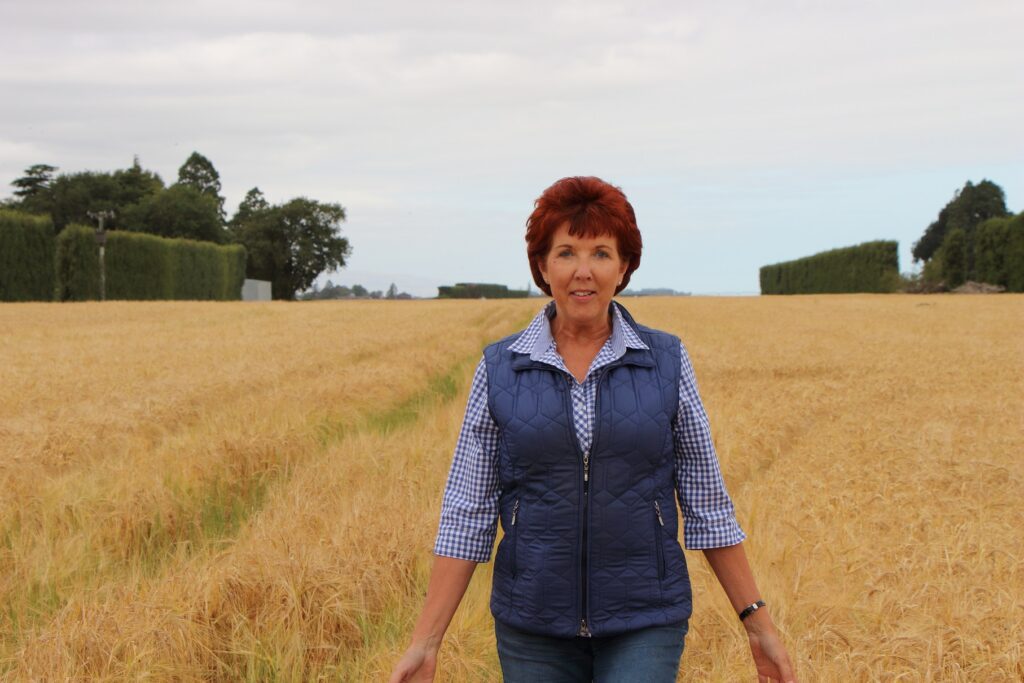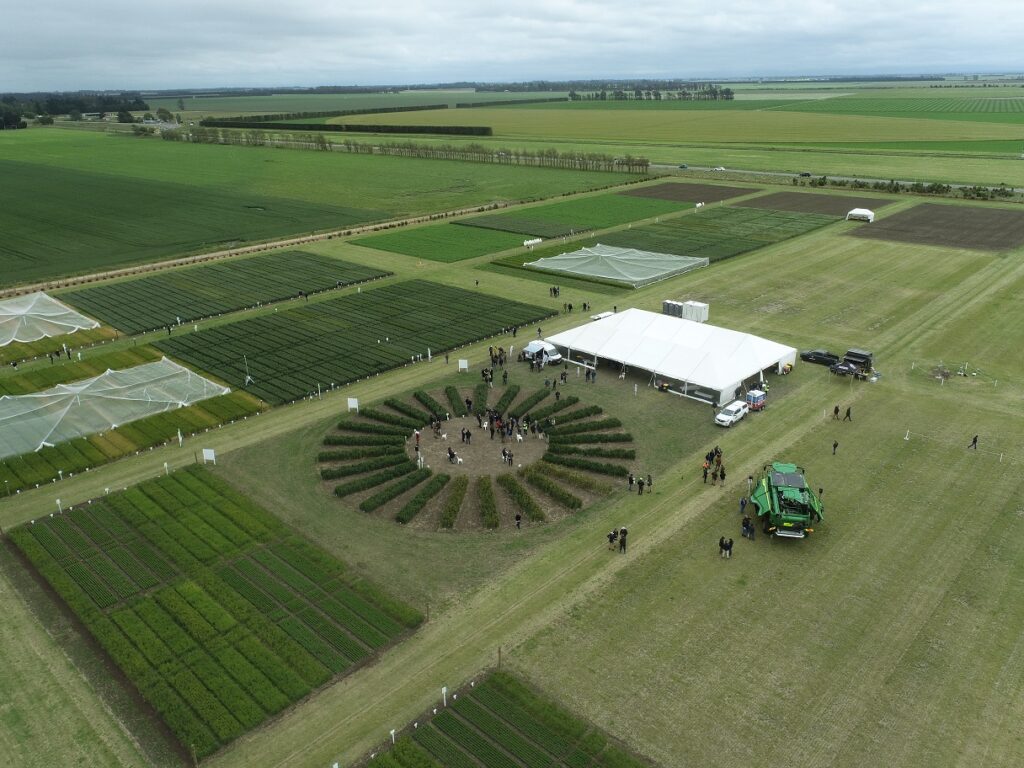The move to agroecological crop protection – sustainable farming that works with nature – is the way of the future, the change New Zealand agriculture must make.
That’s the view of Alison Stewart, chief executive of the Foundation for Arable Research (FAR), one of the first sectors to sign on as a partner when the concept of A Lighter Touch was mooted.
FAR’s commitment to join the programme was made before Alison took up the reins of the organisation, but she says even if FAR hadn’t already been involved, she would have likely signed them up because she sees the programme’s mission as “the way of the future.”

Foundation for Arable Research (FAR) chief executive Alison Stewart. Credit FAR.
The issues that A Lighter Touch grew out of, being minor use of agrichemicals and pesticide resistance for fruit and vegetable growers, were also issues for arable growers. As the vision for the programme developed to include the integration of biologicals, it became even more aligned with where FAR was wanting to go.
“Arable growers in the UK were down to their last few chemicals available to control some of the big diseases and we knew that was a path that our growers here in New Zealand were likely to experience.
“We also saw the value in working with other sectors on these issues as we have a lot of growers in common, because many of our arable growers also grow fresh and process vegetables, and a few grow fruit crops. It made sense to do it as a collaboration with other sectors.”
Alison says pan-sector collaboration was always the strongest value proposition of the A Lighter Touch programme in terms of attracting partners to join. Ironically it has also been its biggest challenge.
“The sectors are all at different stages of their crop protection journey, and a lot of sectors didn’t have a clear idea of what they wanted to achieve from the programme. FAR had a vision and a programme of work (focusing on managing fungicide resistance and the development of integrated pest management programmes) to bring into A Lighter Touch, whereas particularly some of the smaller sectors were still defining what they wanted to achieve. As a result, I think the pan-sector collaboration component is only really just starting to take off now.”
The industry-wide nature of the programme also gives it the scale to promote the concept of agroecological crop protection far more effectively than any individual sector could do alone, Alison says.
“There’s a challenge in that agroecological crop protection means something slightly different for each sector – an agroecological system for a potato grower might be quite different to a kiwifruit grower or a cereal grower. But that’s good because those differences mean we need to describe that system in a more generic way, not just crop specific. And I think being more generic, it will be easier to understand and probably reasonate more outside the industry, with the general public and government agencies.”
Alison is looking forward to seeing knowledge of agroecological crop protection technologies and practices generated through the programme being extended to growers from all directions.

Knowledge sharing – attendees of FAR’s ARIA (Arable Research in Action) 2023 field day listen as industry speakers discuss the changes in crop protection practices in recent decades. Credit FAR.
“For example, arable growers are going to get that knowledge extension from FAR, and from Vegetables New Zealand , Process Vegetables New Zealand, and Horticulture New Zealand. We’re all going to be telling the same story, and as growers hear it from three or four different organisations and via different communication pathways, they’ll start to recognize that this transition is not just one organisation pushing a barrel, it’s actually a change that New Zealand agriculture has to make.”
The consistency of advice to growers from different sources is also a key element in the uptake of biologicals.
“In the 80s and early 90s, biologicals were being pitched as the next big thing, as a replacement for chemicals. Now what we’re saying is that it’s about taking a systems approach, it’s integrated pest management. Chemicals still have a role to play, and biologicals can help protect and maintain the performance of your crop protection chemicals. It’s not about saying biologicals are good and chemicals are bad, it’s about using the right tools, the right products in the right way to achieve the best outcome.”
From Alison’s perspective, she says nationally people are beginning to hear and recognize what A Lighter Touch is about. “The big value for FAR will be if A Lighter Touch can start attracting attention from research organisations in other countries, because then you’ll get like-minded groups and other countries wanting to liaise with A Lighter Touch.
“Suddenly you get an international perspective on what we’re doing and that benefits everyone because it means you’re bringing innovations and new ideas, and expertise and skills from overseas into New Zealand. I think we all benefit from that.”
With A Lighter Touch now halfway through it’s seven-year duration, Alison is keen to see how the programme develops over the next two to three years.

An aerial view of a crop wagon wheel at ARIA 2023, planted to demonstrate how crop protection practices and issues with fungicide resistance have changed from the late-1970s to the present day. Each segment reflected cultivars and crop protection practices of a particular era. Credit FAR.
She says FAR has been very proactive in promoting the programme to its growers, and growers that come along to FAR field events know what A Lighter Touch is about. She believes that, as other ALT partners extend the knowledge gained through the programme with their growers, the programme’s momentum in the grower community will really start to take off.
She’s also interested in the discussion the programme’s governance group has begun about how to best harness all the benefits of the programme and move it forward, to ensure what is achieved through A Lighter Touch is enduring.
“We have to think about what could this look like, and how can we still promote and garner the collaborative benefits without relying on government funding.”
In the meantime, she is focused on seeing the programme delivering maximum value to growers, focusing on its core purpose of taking research and new products already available and looking at how they can be integrated into a farm system. “We really have to make every dollar count and it’s got to count at the delivery end.”
She is also keen to see all the partners in A Lighter Touch take full advantage of the opportunity to learn from each other.
“When you have a pan-sector programme like this, there’s a lot of sharing of ideas and discussions about what might work and what might not work, and I think that willingness to share is really good. Work that’s funded by one sector, they’re more than happy for other sectors to piggyback on that because the reality is everyone benefits.
“New Zealand is too small to have all of the plant sectors working in isolation, we are just not going to be able to keep ahead of the game, or even keep up with the game. It’s in everyone’s best interests to share and collaborate.”
